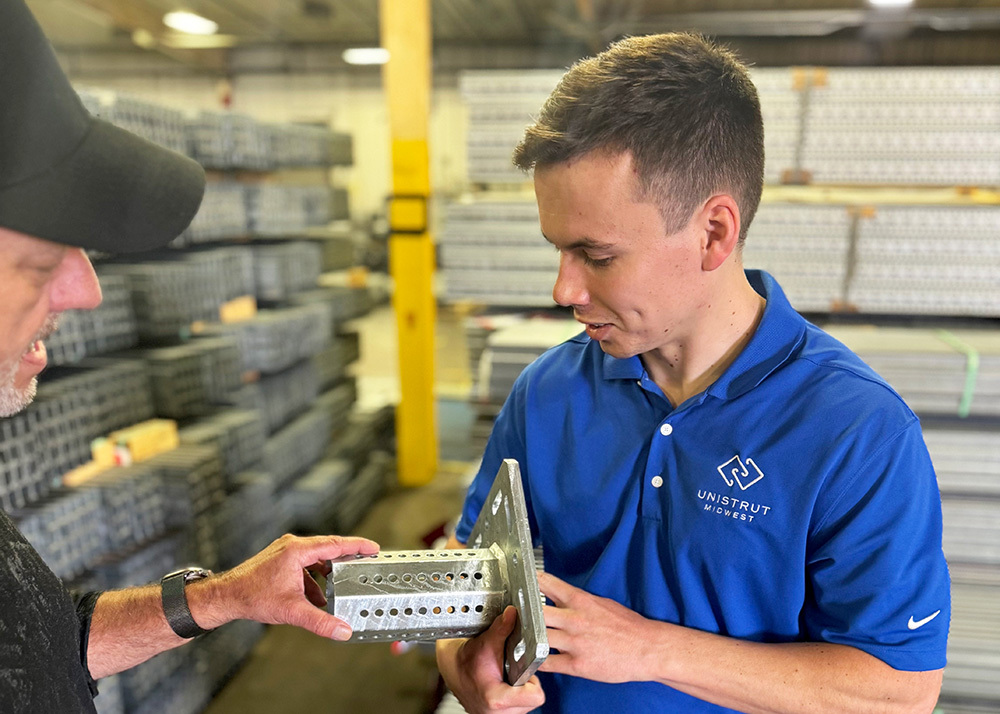Working Closely With Sales to Meet Customer Demands
Posted by Matt Geig on July 16, 2025
As a buyer for Unistrut Midwest, my ultimate goal is to make sure that we have the stock our customers need when they need it. Meeting customer demand doesn't happen by chance; our inventory levels are a function of numerous variables, both quantitative and qualitative.

For our most popularly sold products, stocking levels are a more straightforward function of a historical demand and lead time. However, with over 4000 SKUs in our system, ever-changing customer demand, and limited space in our warehouses, it takes collaboration across the organization to maintain appropriate stock and help our customers’ projects stay on schedule.
Partnering with the Sales Team as a Buyer
Constant communication between purchasing and sales is a critical driver of our organization’s success. Delivering information to sales in a timely manner is oftentimes the difference between winning and losing an order. Along with that, learning more about individual customer needs, whether it be a particular brand, lowest possible cost, or quickest possible delivery, helps drive decisions and ensure customer satisfaction.
For newer offerings, Unistrut Midwest doesn't have years of historical ordering data to leverage in order to determine appropriate stock. That lack of information can create trouble if I'm not working closely with sales and business development. I lean heavily on those departments to make sure we have adequate stock on hand, using their knowledge of current quotes and upcoming projects to help guide my buying.
Learning from the Team
While many of my decisions as a buyer stem from data and conversations with our sales team, I've also found that learning more about the products we offer has been beneficial to my position.

When I first joined Unistrut Midwest, I was very familiar with the ins and outs of the buying process, but had no prior knowledge of strut. With the guidance of the sales and warehouse teams, I have learned the different applications of parts, what types of projects they're commonly used on, and which parts are commonly used in combination with each other. That knowledge allows me to anticipate needs and make buying decisions before sales even makes a request.
While I make many decisions off data, having that deeper understanding of a product and leveraging the team's knowledge can make a difference.
Solving Urgent Client Issues
That established relationship between the purchasing team and the sales department is helpful when it comes to solving client challenges as well.
No matter how well planned a project may be, it is inevitable that an emergency order will eventually come in. Whether timelines were suddenly cut or needs changed after purchases were made, it's our team's job to make sure that projects stay on track even when speedbumps arise.
Fixing these problems relies on being transparent with the customer. They may place an urgent request for a part that we have in stock, in which case the problem is easily solved. But if we are not able to supply the specific part in time, we turn to our robust and diverse inventory. Our team has extensive construction knowledge and knows how to make replacements that are comparable with the requested parts. Whether we need to offer a different finish, length, or brand of part, we typically have access to a solution.
On paper, it is the buyer's job to review inventory and make purchases to keep our stock on schedule. But my main goal is to take care of our sales team, and their goal is to take care of the customer. Using the knowledge I have gained from others in our company and working closely with them to predict customer needs, we are able to meet client demands and help keep projects on schedule.
Do you need an obscure product for your upcoming project? Go ahead and try us. Contact our team to see how we can help.

